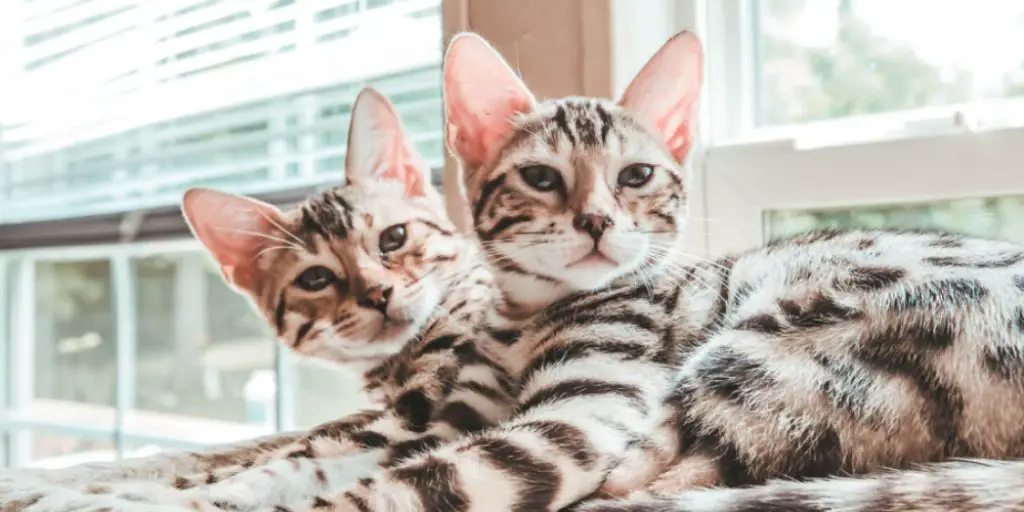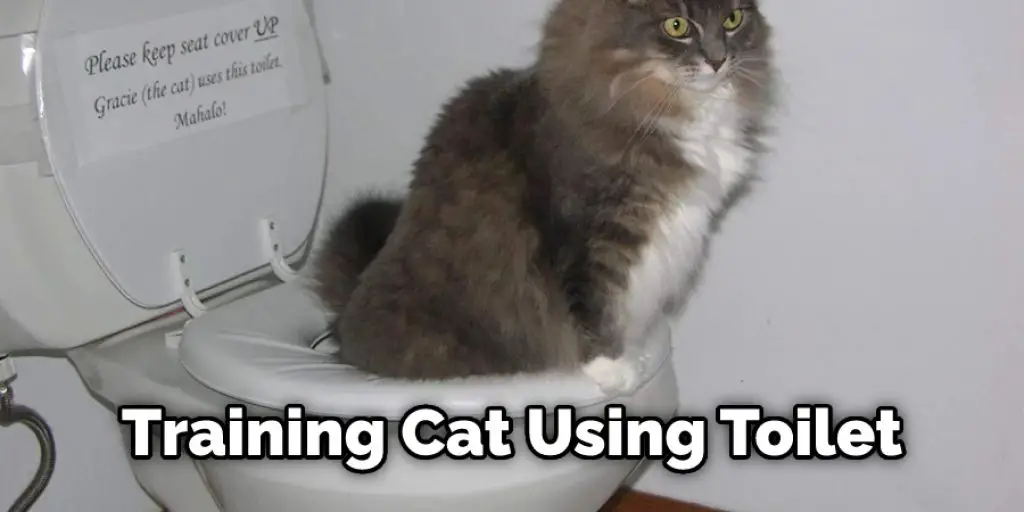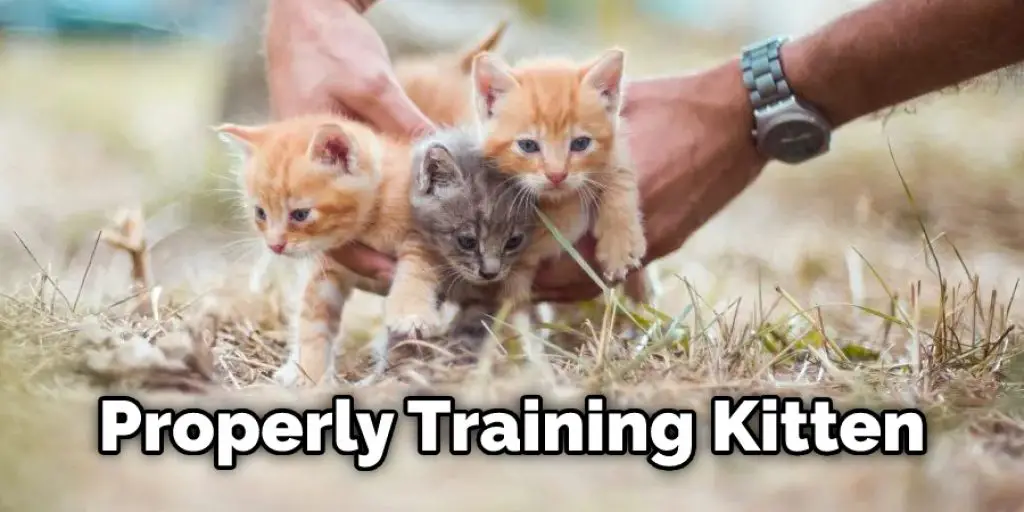The Bengal Cat is a unique breed of domestic cat that has some wild instincts. Unsurprisingly, the temperament of this type of feline can be difficult to manage at times, and it requires a lot more effort than most other breeds. This blog post will discuss how to discipline a Bengal cat to make their lives easier for themselves and you.

It is important to note that all cats require discipline from time to time as they are natural-born hunters who have inherent predatory instincts. The following tips will help teach your Bengal Cat not to act out on these instincts when they should not be:
Contents
10 Common Behavioral Problems in Bengal Cats
1. Climbing Structures
This is a common problem found in Bengal cats, and it can lead to dangerous situations that include injury or even death. Climbing structures may also cause your cat to fall, which will inflict serious injuries or possibly kill them instantly.
Bengal cats like to climb, so it’s important to give them plenty of space to do so. Otherwise, they might try to climb on something that’s not strong enough to support them and could get hurt.
2. Clawing Furniture
Bengals tend to scratch all sorts of things, including furniture and wallpaper. This is why it can be a good idea to buy special scratching posts for your Bengal Cat so that they will have an appropriate place to relieve their excess energy while also protecting your furniture.
Not only will this alleviate the issue, but it can save you a lot of money on repairs for things like torn curtains or clawed-up chairs and tables.
3. Hunting Outside
Although Bengal Cats are domesticated animals, they still have some hunting instincts built into their genetic make-up. When these instincts overtake them, your cat may run out of the front or back door and cause some damage to your garden or even steal food from nearby animals. If this starts happening, you will need to start disciplining your cat and teaching them positive behavior appropriately in a domestic environment.
4. Clawing Your Skin
Bengals are known for being destructive animals that tend to nip and scratch. This is just their way of communicating with you, but if it gets too excessive, the behavior needs to be curbed right away because it can become unhealthy for them and/or you.
An effective way of correcting this issue is simply by sticking your hands in the air when they start to reach for you. If they bite, lift them by the scruff of their neck and place them on the ground away from you.
5. Aggression With Other Adult Cats
Although this can be a problem across most breeds of domestic cats, it is especially prevalent in the Bengal cat breed due to their genetic makeup. It is best to keep your cat indoors or if they do go outside, be sure to have them wear a tag collar with your contact information on it.
If the aggression between cats starts and fighting with other cats in the neighborhood, these bad behaviors can quickly become dangerous and should be stopped from day one.
6. Aggression With Dogs
You should keep your Bengal cat indoors as much as possible, or get an outdoor enclosure for them, because they can get hurt if they meet a dog on the street.
7. Destruction of Furniture
This may be one of the most common problems in Bengal cats, and it’s usually a good idea to make sure they have plenty of toys designed for them.
Chances are, if you do not provide your cat with things to scratch or climb on, you can bet that they will take matters into their own paws. It is also important to put up any loose cords or strings that could pose a threat to your cat.
8. Aggression Towards Humans
The same aggression issues common in Bengal cats with dogs are very likely to be found when they are around humans. Because of this, it is best not to approach them from behind because you will get a nasty bite to let you know how your cat feels about it.
9. Getting Into Things
If you don’t have baby-proofing in your home, Bengal cats can get into all sorts of trouble. They’ll rummage through cabinets, climb on kitchen counters, and even stick their paws into electrical sockets. To keep your Bengal cat safe, it’s important to baby-proof your home or train your cat to obey your commands.
10. Lack of Active Playtime
Many cat owners who own normal domestic house cats may find that they do not need much time to themselves, but Bengals and other high-energy breeds often require more physical activity than normal house cats. Without enough exercise, your cat has undesirable behavior or develops health problems such as obesity, as well as depression and anxiety. Playtime is a great way to bond with your cat and the perfect way to get the exercise that they need daily.
Reasons Why You Can’t Discipline or Punish a Bengal Cat
- Some Bengals may view discipline as abuse and decide this is not a situation they want to be in.
- You may have to discipline them several times before it sticks and they get the message.
- If you correct a Bengal cat when they are young, all the discipline puts in place will be out the window by the time they are teenagers.
- Many Bengal cats view discipline as a form of punishment because they do not understand what you are trying to correct. For example, if you let your cat outside and they go into the neighbor’s yard and damage house plants that is outside from time to time, this could be seen as negative reinforcement and unacceptable behavior when in reality, it is positive reinforcement for doing something good. The problem is that the cat is not aware that they are being rewarded for getting out of your yard into the neighbor’s yard.
- Discipline often goes over your Bengal cat’s head because they do not understand why it is important to you and what you are trying to correct.
- Punishing or disciplining a Bengal cat can lead to inexplicable aggression, which you obviously do not want.
- Punishing a Bengal cat every single time they get into a little trouble can be seen as abuse because it becomes very overwhelming for them, and there will come the point where they go off and get revenge on you instead of doing what you are trying to teach them to do.
How to Discipline a Bengal Cat Effectively With Love
Step 1
First, make sure you are a good role model for your cat. This means that if you do not want them to scratch the furniture, keep things off the floor or climb on top of shelves, then don’t show them how fun it is, and they will follow suit. You must also make sure that every time you discipline your cat that you have deep, it may not appeal to them.
If your cat is still unhappy about using the box, try moving it into a different area of the house and experiment with their preferences. If they start jumping out of the box or are spending less time in there, this could be something that you need to think about when it comes to getting them a toilet. Some cats may be too afraid to use the box, so instead of putting it in a quiet corner, try putting it in a more active area where they’ll feel more comfortable.
Step 2
The next thing you want to do is remove yourself from the situation and let your cat settle down. However, cats are not human beings and have different reactions and personality traits, so try to find out why they did this in the first place. This means that you will need to spend time with them to understand what you are trying to teach them.
You may want to spend time using cat toys that will not damage your belongings and try to get them down from the shelf or off of the counter. Step away when they do this to get a clear indication as to what behavior is acceptable and which behavior is not. If possible, try to distract them with a toy before getting too far into what you do not want.
Step 3
If your cat is still unhappy with using the litter box, you need to find out why and how you can change their mind. If they are doing this because of behavior problems or past mistakes made, you will have to go back and work on the cats’ behavior with positive reinforcement. Setting up a cat toilet may also help because many people find that their Bengal will take more interest in using this instead of the regular litter box.
Step 4

If you choose to use a cat toilet, you need to make sure it is in an area of the house that is easy for your cat to access and has a door that closes behind them. You want the box to be convenient to not have any problems or issues with using it.
Many people choose to use these boxes in basements because this is an area of the house where most cats are afraid to go, but you can always use them in other areas.
Step 5
If you have tried everything else and still find that the cat will not use the bathroom, then you may just have to take a trip to see your veterinarian and get them a cat training seat so they can begin using their box again. It is up to you whether or not you believe punishing is an effective way to get your cat to stop doing things they shouldn’t.
Just remember, it can lead to a lot of aggression and, in some cases, inappropriate urination instead of the bathroom you have set up for them. You should always encourage positive reinforcement when it comes to toilet training your Bengal cat. Otherwise, you may just end up with a cat that is impossible to deal with.
Step 6
When your cat is using their toilet, you need to make sure that you reward them for doing what they should. This means that if the cats get into trouble and use the box, give them a treat or praise to show them how well behaved they were. However, if the cat does not use the box when they are supposed to, you need to take them back into their litter box and show them what you want them to do. It is important to remember that your cat will not use the toilet if it is dirty. This means that you need to keep an eye on their litter box and make sure that it is clean at all times. When you notice that your cat is leaving a mess in their box, you need to take them back into the box and show them what they should be doing. If you are not able to keep up with the cleaning of the box, you may want to consider getting another box for your cat to use.

You can also use a spray bottle filled with water or vinegar to spritz your cat every time they get out of the bathroom when they should be inside. This will not hurt them, but it will remind them that they did get out of the box, and you want them to go back in.
Step 7
You need to make sure that you watch your kitty every time they use the bathroom and give them positive feedback. This will help reinforce their behavior and let them know that using the box is something they should be doing all the time.
Step 8
If your cat seems to be spending less time in the bathroom than it used to, you may want to move the box into a different area and use your positive reinforcement when they use it. They will be confused as to why you are moving the bathroom around, so this will help them get used to changing and making sure that they have no issues using their cat toilet.
Step 9
If you want your cat to use the bathroom, you should make sure it is in a place that is comfortable for them. positive reinforcement, like treats, will help train your cat to use the bathroom when and where you want them to.
Step 10

If you are still having issues when it comes to your cat, consider getting a professional to help you with training. This is especially true if none of the above steps have made a difference and your Bengal is still having problems using their litter box or going outside. A trained professional will bring in other tools such as treats that can help them take care of this problem.
You can check it to Stop Cat From Moving Kittens
Note
A Bengal is generally a very smart cat, and if you are consistent, they will learn what you want them to do by coming up with their own solutions or suggestions. There will be times when they get into trouble, but the best thing you can do at this point is to try and come up with a solution to the problem.
How Smart Are Bengal Cats?
It is safe to say that a Bengal cat is among the most intelligent of all cats. Unlike many other domestic felines, Bengals are known for their extremely high intelligence and ability to easily learn various tricks. As a result, they can be trained to do numerous things like walk on leashes or even fetch small objects when you throw them!
It is also important to note that domestic felines with more than 50% Asian Leopard Cat blood in them (which includes both Bengals and Savannahs) are five times as smart as average house cats. Conversely, those with 40% or less genetics from this large feline tend to receive fewer benefits in terms of brainpower. There are some exceptions, though, but overall, it is best to follow this rule of thumb.
We have to understand that domestic felines, in general, are a lot smarter than we give them credit for, and many owners haven’t even tapped into the true potential of their feline friend’s mind. However, it is also important to note that most Bengal Cat Breed can learn commands much faster than other breeds of cats, and they are also able to retain these sorts of things longer than the average cat as well.
With all of these facts considered, it is safe to say that you will be taking advantage of your Bengal’s intelligence if you take the time to train them properly and reward them regularly for doing what you want them to do. That is why it is so important to use positive reinforcement when training your pet! You can follow the steps on this blog on how to discipline a Bengal cat to give your cat training appropriately.
Some Tips to Prevent Misbehavior in Bengal Cats
Bengal cats require some special attention and training. They tend to be very active, playful, and intelligent. As a result, they get into things that may not be suitable or safe for them as well as being annoying at times! Therefore discipline a Bengal cat is necessary to stop this behavior from occurring. The Following Tips Should Help Lead You to More Success With Training Your Bengal Cat :
Tip 1
At the very first sign of misbehavior, you should begin to discipline them. You must be consistent and persistent with your training if they are going to behave in an acceptable manner.
Tip 2
Most cat owners know how important it is to properly train a kitten or a cat. However, not all people take advantage of these tricks or realize the importance of early training.

Tip 3
If you keep a Bengal cat indoors, it is important to make sure that they do not get into any areas where they are not meant to go. You can prevent them from going into specific places by placing objects like collars, toys, and other things they can play with within those areas; cats are naturally curious and love to climb, so this trick works really well.
Tip 4
If you give your Bengal cat some freedom outside of the house, it is important to make sure that they are under supervision when they are outdoors.
Tip 5
You should never leave a Bengal cat outside alone at night. Many cats have been the target of burglars. Cats can present valuable clues to police with regard to solving crimes, but because they are so small, it is easy for them to sneak into homes that have had their windows left open.
Frequently Asked Questions
Q: How Often Should You Clean Out the Litter Box?
A: The most important answer to this question is that it will be different for each cat owner and cat. There are some cats that only need their box cleaned every few days, while others may require daily maintenance. It really comes down to how bad it smells or looks. Expect the smell to get worse and worse as time goes on if you do not keep it cleaned out, so be sure to clean it out at least once every two days.
Q: How to Stop My Kitten From Jumping All Over My Laptop?
A: This is a very common problem that kitten owners face. There are two primary causes of this behavior, and they are boredom and/or curiosity. If the cat wants to play, allow him to engage in some playtime fun with his favorite toy before allowing him on your laptop. If you suspect it’s just simply out of curiosity, then there are a few things you can try, such as using one of those squirt bottles or making loud noises (either from a spray bottle or clapping) when he jumps up onto your laptop so that he learns what not to do.
Conclusion
The Bengal cat is a wonderful pet for an individual or family. They’re playful, curious, and intelligent perfect qualities that make them great pets! However, they can also be stubborn when it comes to training. Therefore, it’s important to start early with proper discipline, so your kitty feels secure as he grows up in order to avoid problems down the line.
We hope this article has helped you learn how to discipline a Bengal cat and train your Bengal kitten from puppyhood onward by following our guidelines on what not to do using positive reinforcement methods of reward-based training techniques! If you have any questions about these tips, feel free to reach out anytime!
Check it out also – How Long Will a Cat Have Diarrhea After Deworming

